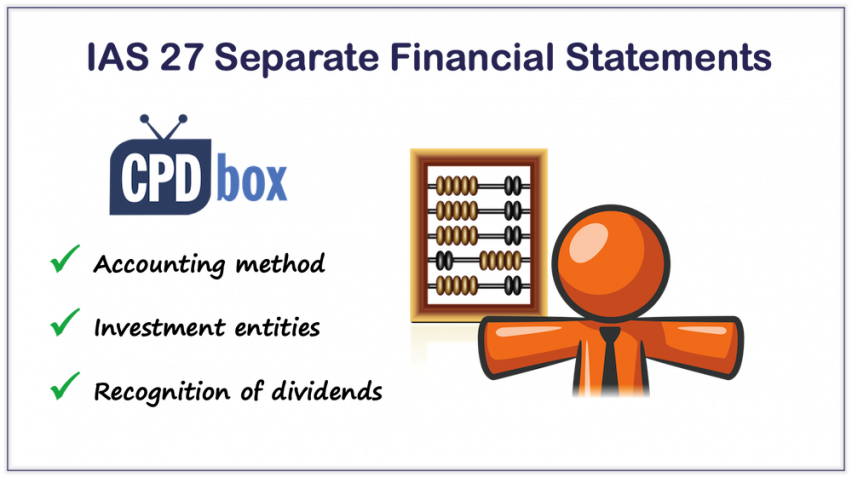IAS 27 Separate Financial Statements
International Accounting Standard 27

Overview of IAS 27
- Issued: in 1989; re-issued in 1994, 2003 and 2008, followed by amendments
- Effective date: 1 July 2009
- What it does:
-
- It defines consolidated and separate financial statements;
- It prescribes methods of presenting the investments in separate financial statements;
- It contains guidance on separate financial statements of investment entities, presenting dividends and group reorganizations.
- It requires a number of disclosures.
-
Main rules of IAS 27
Key terms:
Consolidated financial statements are the financial statements of a group in which the assets, liabilities, equity, income, expenses and cash flows of the parent and its subsidiaries are presented as those of a single economic entity. (IAS 27.4)
Please note that group includes only a parent and its subsidiaries.
Separate financial statements are the financial statements of a parent, or an investor with joint control of, or significant influence over, an investee. In these financial statements, the investments are presented in one line, in accordance with the method selected from the below options.
IAS 27 does NOT prescribe the need to present separate financial statements.
Instead, it prescribes the rules for presenting them in a situation when an entity voluntarily decides to issue them.
Accounting methods
IAS 28 permits 3 methods of accounting for subsidiaries, associates and joint ventures in the investor’s separate financial statements:
The same accounting method shall be applied for the same category of investments.
Other rules
- Investment entities: Investment entities are defined by IFRS 10.
An investment entity needs to account for its investments in subsidiaries at fair value through profit or loss in the separate financial statements, if it is required to measure its investment at FVTPL in line with IFRS 10. - Dividends: these are recognized in the separate financial statements when the right to receive them is established.
Dividends are recognized in profit or loss except for the situation when the investor applies equity method. In this case, dividend reduces the carrying amount of the investment.
Questions and Answers
- How to present the financial statements when going concern does NOT apply?
- How to classify expenses in profit or loss?
- How to present a loan with breached covenants? – this Q&A relates to current/non-current distinction
- How to deal with CAPEX threshold for your PPE? – this Q&A relates to materiality and its change during the reporting period
- Accounting when acquired subsidiary is not a business – how to account for the asset acquisition in both separate and consolidated financial statements
Other Resources
- IFRS Kit – learn IFRS in 150+ videos, 150+ excel case studies, quizzes, certificates
- Expected Credit Loss for Accountants – highly specialized course focused on ECL under IFRS 9 with step-by-step example related to trade receivables, many practical insights included.